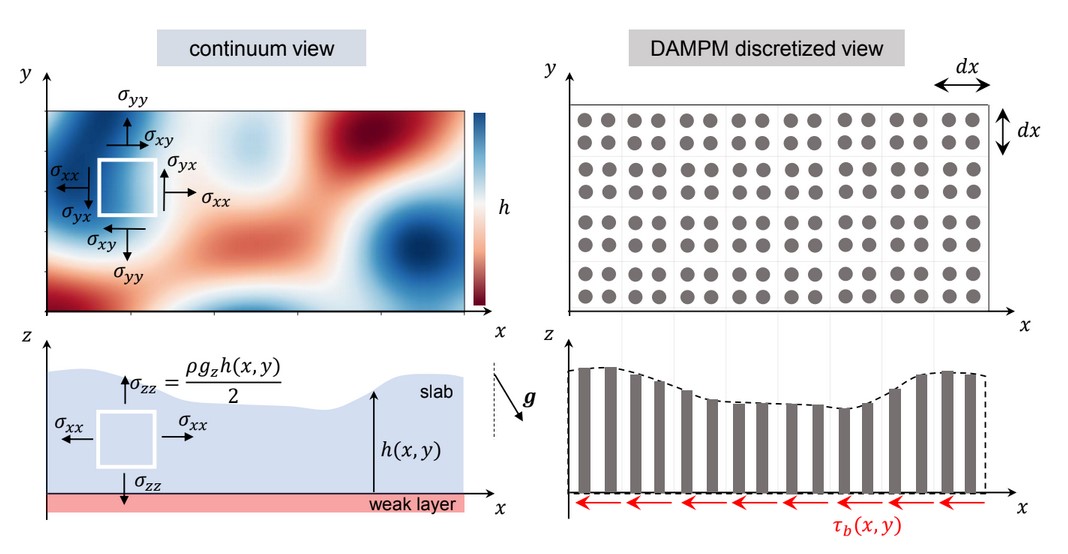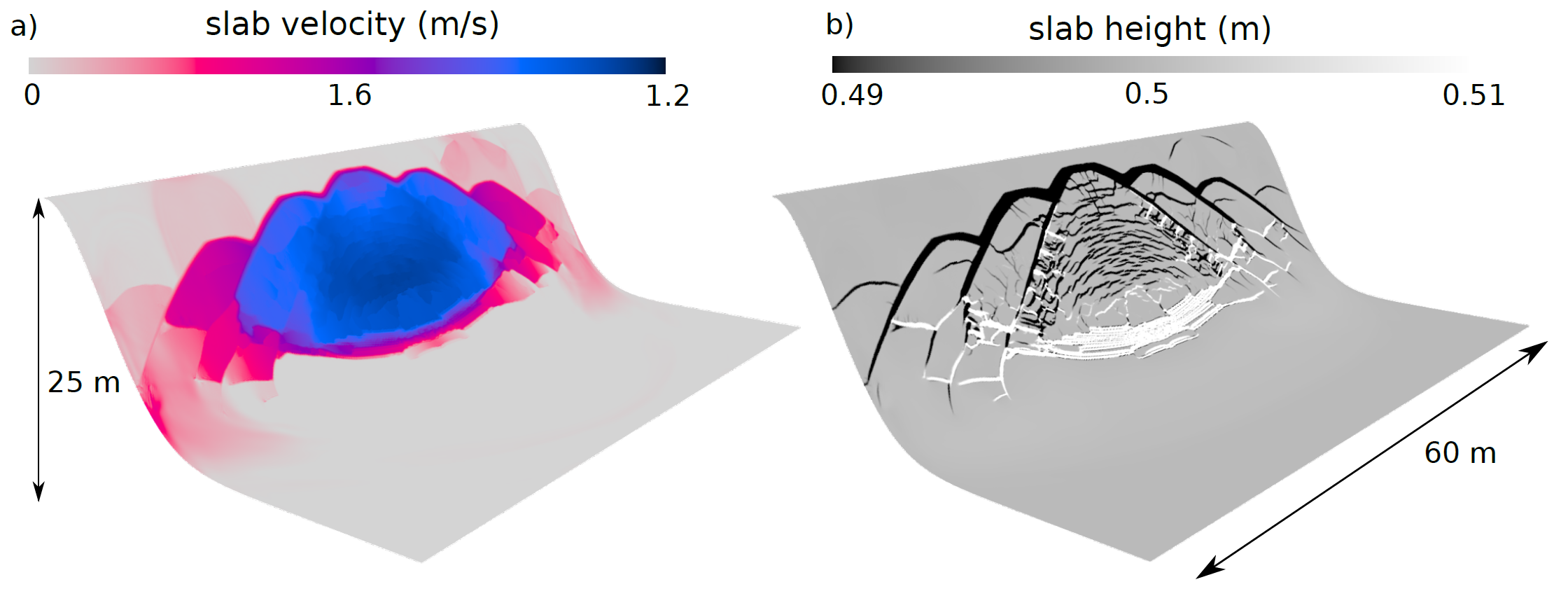Snow slab avalanche release
Shallow landslides such as snow slab avalanches pose a significant threat to people and infrastructure. Continuum numerical modeling of dynamic crack propagation in relation to slab avalanche release has been a great challenge over the past decade. Here, a novel simulation framework was developed to simulate failure initiation, crack propagation, slab fracture, avalanche release and flow at the slope scale in a unified manner. The model is based on a new elastoplasticity model for porous cohesive materials and a large strain hybrid Eulerian–Lagrangian numerical method (MPM). This simulation framework allowed us to accurately reproduce the onset and propagation dynamics of anticracks observed in snow fracture experiments and simulate avalanche release at the slope scale in 3D. The key ingredient consists of a modified strain-softening plastic flow rule that captures the complexity of porous materials under mixed-mode loading accounting for the interplay between cohesion loss and volumetric collapse. Our unified model represents a significant step forward as it simulates solid-fluid phase transitions in geomaterials which is of paramount importance to mitigate and forecast gravitational hazards.

These numerical simulations usually involve dozens of millions of particles and thus require relatively long computational times. Hence, to improve the efficiency of the model, a depth-averaged Material Point Method (DAMPM) was later developed to evaluate the release size of shallow landslides and slab avalanches. DAMPM is an adaptation of MPM with classical shallow water assumptions, thus enabling large-deformation elasto-plastic modeling of landslides in a computationally efficient manner.

After model verification, large scale simulations were conducted to evaluate the shape and size of avalanche release zones over different topographies. Given the low computational cost compared to 3D MPM, we expect this work to have important operational applications in hazard assessment, in particular for the evaluation of release areas, a crucial input for geophysical mass flow models. Our approach can be easily adapted to simulate both the initiation and dynamics of various shallow landslides, debris and lava flows, glacier creep and calving.

References:
Gaume, J., Gast, T., Teran, J., Van Herwijnen, A., & Jiang, C. (2018). Dynamic anticrack propagation in snow. Nature communications, 9(1), 3047.
Gaume, J., van Herwijnen, A., Gast, T., Teran, J., & Jiang, C. (2019). Investigating the release and flow of snow avalanches at the slope-scale using a unified model based on the material point method. Cold Regions Science and Technology, 168, 102847.
Guillet, L., Blatny, L., Trottet, B., & Gaume, J. (2023). A Depth-Averaged Material Point Method for Shallow Landslides: Applications to Snow Slab Avalanche Release. arXiv preprint arXiv:2301.06296.